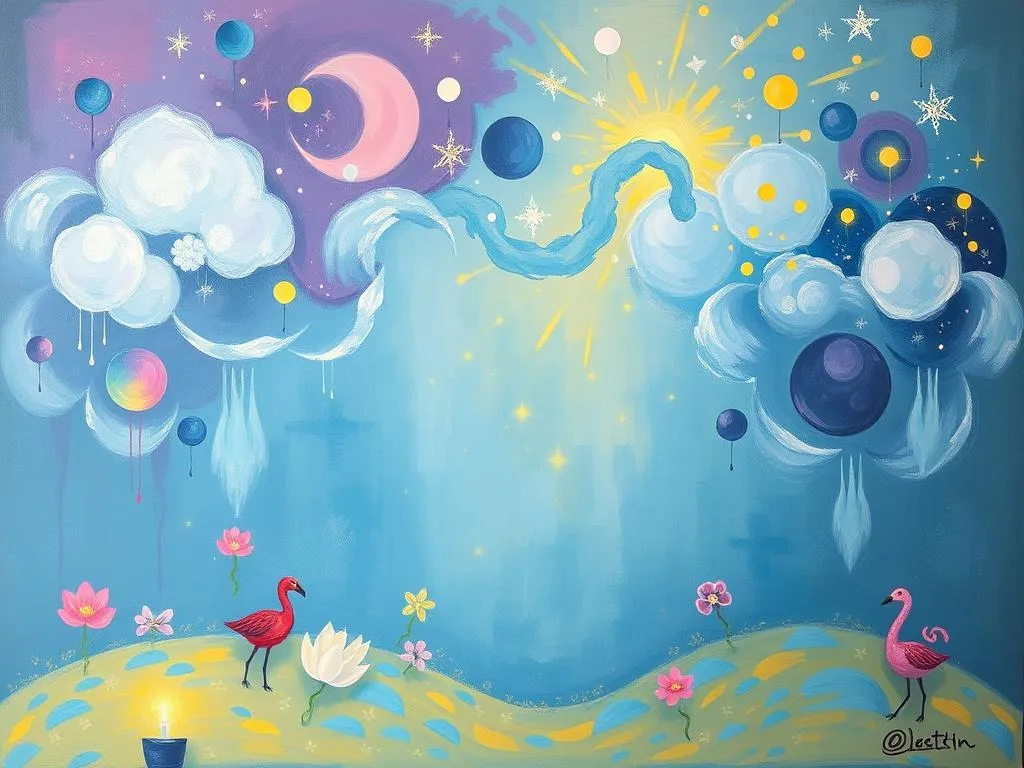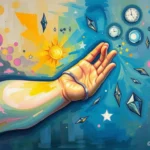
Have you ever woken up from a dream feeling bewildered, as if you had just ventured into another realm? Perhaps you experienced a vivid scene that lingered in your mind, prompting you to question its meaning. Dreams have long fascinated humanity, serving as windows into our subconscious. They can be strange, beautiful, and terrifying all at once. Yet, hidden beneath the surface of these nighttime narratives are powerful messages waiting to be understood.
Understanding dream symbolism can provide profound insights into our waking lives. Whether you find yourself flying high above the clouds, trapped in a labyrinth, or speaking to long-lost loved ones, each element of your dream carries significance. In this article, we’ll explore the layers of dream interpretation, looking at the symbolic meanings, the experiences they represent, and how they can guide us toward personal growth.
Dreamscapes: Unraveling Symbols of the Subconscious
When delving into symbol analysis, it’s essential to recognize that dreams are often a tapestry woven from our emotions, experiences, and cultural influences. Each symbol can represent an aspect of our psyche or a lesson our mind is trying to convey.
1. Water: Water is one of the most potent symbols in dreams, representing emotions, the unconscious, and the flow of life. Calm waters may signify peace and contentment, while turbulent waters could indicate emotional turmoil or unresolved issues. This duality reflects the complexity of our emotional landscape.
2. Flying: Dreams of flying often embody a yearning for freedom or a desire to escape from life’s constraints. This symbol can indicate a sense of empowerment, or conversely, it may point to a fear of losing control. The nature of the flight—whether graceful or chaotic—can shape your understanding of this symbol.
3. Animals: Animals in dreams frequently symbolize instincts or aspects of our personality. A lion may represent courage and strength, while a snake might evoke feelings of danger or transformation. The specific traits of the animal can enrich your understanding of your inner self and the qualities you may need to embrace or confront.
4. Falling: Falling dreams can evoke feelings of fear and insecurity, representing a loss of control or fear of failure. Yet, they can also signify a release of burdens, an invitation to let go of what no longer serves you. The context of the fall—whether you land softly or crash—will influence its meaning.
5. Doors and Windows: These symbols often represent opportunities and transitions. A door may signify a choice or a new phase in life, while a window can symbolize perspective or insight. What lies beyond these openings can provide valuable clues about your current life situation.
By dissecting these symbols, you can start to connect the dots between your dreams and your life experiences, creating a clearer picture of your inner world.
Dream Chronicles: Tales of Experience
Our dreams often reflect our daily lives, serving as mirrors of our thoughts, feelings, and experiences. Let’s explore several dream scenarios that many people encounter and what they might signify.
1. The Test: Imagine you are back in school, unprepared for an important exam. This dream often signifies feelings of inadequacy or fear of judgment. It suggests a need to confront situations in your life where you feel unprepared or anxious. Consider what areas of your life invoke this sense of pressure.
2. Being Chased: In this scenario, you find yourself running from an unseen pursuer. Such dreams can evoke intense feelings of anxiety and fear. They often reflect avoidance—perhaps you are running away from a problem or a decision in your waking life. Ask yourself what you might be avoiding and how you can face it head-on.
3. Losing Teeth: If you dream about your teeth falling out, you might feel a sense of embarrassment or insecurity. This dream can symbolize fears about appearance or communication and may reflect anxiety about aging or losing control. Consider what aspects of your life feel unstable or are causing you to worry about how others perceive you.
4. Meeting the Deceased: Encountering a loved one who has passed away can be a profound experience. This dream may signify unresolved feelings or a desire for closure. It can also represent guidance or the need to confront feelings of loss. Reflect on what this encounter means to you and how it might help you process your grief.
5. The Endless Maze: Finding yourself in a maze with no clear exit can indicate feelings of confusion or being trapped in a situation. This dream may reflect life’s challenges, where you feel lost or unsure about your direction. Think about the choices you face and how you can begin to navigate your way through complexity.
These scenarios are universal, yet each person’s interpretation will differ based on their unique experiences and emotions. By examining your own dreams, you can uncover the layers of meaning that resonate with your individual life journey.
Awakening Potential: The Path of Personal Growth
Dreams can serve as catalysts for personal growth, offering insights into our thoughts and behaviors that we may not consciously acknowledge. Engaging with your dreams can lead to transformative changes in your waking life. Here are some practical steps to harness the potential of your dreams:
1. Keep a Dream Journal: Start writing down your dreams as soon as you wake up. This practice can help you remember details and identify patterns over time. As you reflect on your dreams, look for recurring symbols or themes that might reveal deeper insights about your waking life.
2. Reflect on Emotions: Take a moment to consider how you felt during the dream. Emotions can guide you toward understanding what your subconscious is highlighting. Ask yourself why you felt that way and how it connects to your current life circumstances.
3. Identify Triggers: Pay attention to what triggers certain dreams. Stressful situations, significant life changes, or unresolved conflicts can often manifest in your dreams. By recognizing these triggers, you can work on addressing them in your waking life.
4. Create a Dialogue: Engage with your dreams as if they are a conversation. Ask questions about what the symbols and scenarios mean to you. This practice can lead to breakthroughs in understanding yourself and your motivations.
5. Seek Guidance: If you’re struggling to interpret your dreams, consider discussing them with a trusted friend or therapist. Sometimes, sharing your experiences can yield new perspectives and insights.
Incorporating these practices into your life can transform how you view your dreams. They shift from mere nighttime narratives to powerful tools for self-discovery and growth.
As we journey through the landscape of dreams, it’s essential to remember that these visions are deeply personal and often multi-faceted. Your dreams are not just reflections of your thoughts; they are mirrors of your soul. By embracing both the symbolism and the experiences they represent, you can unlock pathways to greater understanding and personal transformation.
The next time you wake from a dream, instead of brushing it aside, pause and listen. What wisdom does your subconscious want to share with you? The answers may just lead you to a more authentic and fulfilled life.







